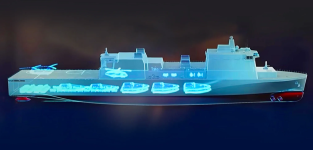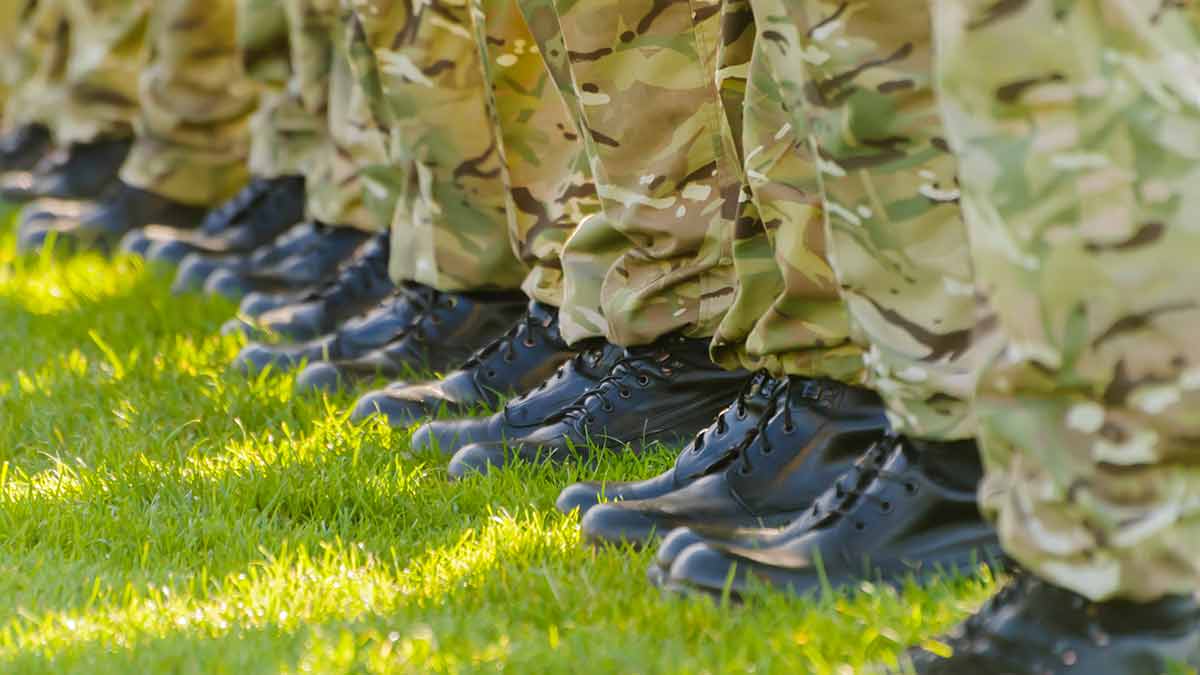daftandbarmy
Army.ca Fossil
- Reaction score
- 43,056
- Points
- 1,160
Almost like the Royal Marines need a distinctive uniform. Maybe some patches?

Distinctive beret even?

Almost like the Royal Marines need a distinctive uniform. Maybe some patches?

Green is so common these days…Distinctive beret even?
Green is so common these days…
Hey that’s what I say after every FORCE test!And it's one of the only colours with its own song
The identity of the vessels is no surprise. HMS Bulwark and Albion are the most high-profile casualties. The RN simply does not have enough sailors to provide a ship’s company for HMS Bulwark when she emerges from her long refit. There are strong rumours that an agreement has already been reached to sell HMS Bulwark to the Brazilian Navy but this has not been officially confirmed. HMS Albion is worn out and needs a major refit, most likely she will be scrapped unless a buyer can be found willing to pay the costs of refurbishment.
HMS Northumberland is to be scrapped as she is beyond economic repair. When dry docked in Devonport for a major upkeep period, her keel was found to be completely rotten.
RFA Wave Ruler and RFA Wave Knight will go. Both tankers have been laid up for some time due to a lack of crews and there is no prospect in the near future of that situation changing. Both are in reasonable condition and may also attract interest from foreign buyers.


| 1,150 linear metres of vehicles (up to 24 Challenger 2 tanks or 150 light trucks) Cargo capacity of 200 tons ammunition or 24 TEU containers |
| 356 (standard), 700 (overload) |


LSC’s basic design metrics are a broad aim for an overall length around 18-20 m, and a 30-50 tonne full-load displacement, depending on payload and launch-and-recovery (LAR) arrangements. However, Dalzell explained, there is flexibility in design size to meet customer requirements.
A practical cruising speed for a craft of this size is 20-30 kt, with ability to sprint above 30 kt if required. Speeds are sea-state dependent, though. Cruising range depends on the mission’s fuel and payload requirements: however, around 300 n miles would reflect the missions envisaged. Onboard facilities to support multi-day operations can be provided.
For launching LSC from its ‘mothership’, BAE Systems is assessing various options. Generic, established concepts include well-docks, davits, load-handling systems, and bespoke LAR constructs.
For launching its own payloads, LSC is designed around Roll-on/Roll-off (Ro/Ro) access, with a tunnel running through the middle of the craft. Central to the LSC concept is capacity to embark and disembark capabilities (including people and their equipment) quickly and efficiently, and to have flexibility to respond rapidly to changes in missions. The Ro/Ro concept reflects these requirements. From the operator’s perspective, Dalzell noted, the Ro/Ro approach provides flexibility and speed in response because everything is loaded, ready to go.
LSC’s conceptual emphasis on modular design is reflected in the fact that, if vehicles are not embarked, other, palletised or podded capabilities can be carried onboard, including loading them through hatches on the upper superstructure.
LSC can be operated in crewed or uncrewed mode, or lean-crewed mode enhanced with autonomy, Dalzell explained. Uncrewed operations can be conducted through using remote control or full autonomy. “The concept for the craft is it will be designed with our Nautomate integrated autonomy system baked into it,” he said.

....
Even before the defence review has begun, five Royal Navy warships are to be scrapped - Navy Lookout
The Defence Secretary confirmed in Parliament today that five RN warships are to be scrapped as a cost-saving measure. In a move described by the John Healy as "common sense", and in response to to financial pressures, the ships will be axed as part of a package of measures that it is hoped will...www.navylookout.com
Problem number one. No sailors.
Solution one. Stop building ships that need lots of sailors.
Do the other thing.
....
The key to the other thing - the Multi-Role Support Ship.
The MRSS is due to replace Albion and Bulwark as well as Argus and the three Bay Class LSD(A)s. Argus is very long in the tooth and had structural issues 20 years ago that kept her dockside as a school platform. The Bays are in service and providing proof of concept models for the Marines new Littoral forces.
The intent is to build 6 MRSS with 3 to be built immediately and then three LSD(A) replacements to be built. The MRSSs may end up borrowing from the parent Damen Yard concepts that delivered the Bays and the Dutch Transports.

Royal Navy outlines Multi Role Strike Ship requirements - Navy Lookout
The RN has begun pre-procurement engagement with industry for the MRSS project and has offered some initial insights into its requirements. Here we look at the outline specification and the significant challenges that must be overcome to deliver these ships. Pace and procurement MRSS is now in...www.navylookout.com
The LSDAs, with an RFA crew of 70 displace 16,000 tonnes and can carry
1,150 linear metres of vehicles (up to 24 Challenger 2 tanks or 150 light trucks) Cargo capacity of 200 tons ammunition or 24 TEU containers 356 (standard), 700 (overload)
The MRSS looks to carry 2 Chinooks or Merlins for Ship to Shore work, along with Viking APCs and a raft load of boats and UxVs.
View attachment 89282
....
The key driver for the vessels will be / is the Commando Force operating model. The model extends across the Competition-Conflict-Crisis spectrum

Strike from the sea – developing the UK Commando Force - Navy Lookout
The Royal Marines have been undergoing a rapid transformation in the last 5 years. Here we take an overview of their new operating concepts and the enablers that will be needed to ensure future credibility. Background Now comprising less than 6,000 regular personnel, the RM are a key part of the...www.navylookout.com
....
Another component of the plan appears to be an extension of the CB90 concept instead of traditional landing craft. The CB90 is a landing craft but it has significant open water capabilities and can be used as a weapons and sensor platform in its own right.

BAE Systems’ Littoral Strike Craft Shows New Ship-to-Shore Capability Delivery Concept
BAE Systems has showcased its new Littoral Strike Craft (LSC) at Euronaval 2024. The concept shows a new Ship-to-Shore capability...www.navalnews.com



 www.personneltoday.com
www.personneltoday.com
So does this mean they're not as broke as they say?Let's see if bribery works
Retention payments to tackle decline in armed forces
The Ministry of Defence has announced new retention payments for thousands of service personnel in what it describes as ‘decisive action’ to tackle the long-term decline in Armed Forces numbers.
It said that around 5,000 eligible aircraft engineers will, from April 2025, receive £30,000 when they sign up for an additional three years’ service while, from January, a new £8,000 retention payment will be given to around 12,000 eligible Army privates and lance corporals.
Minister for veterans and people, Alistair Carns, said: “This government is on a drive to boost military morale and we are taking decisive action to stop the long-term decline in Armed Forces numbers, having inherited a recruitment and retention crisis – with targets missed every year for the past 14 years.

Retention payments to tackle decline in armed forces
MoD announces new retention payments in ‘decisive action’ to tackle the long-term decline in Armed Forces numbers.www.personneltoday.com
So does this mean they're not as broke as they say?


Pack march them across Europe as they do duty cleaning war graves and monuments.
They can dig a trench and sleep in it and live off of rations.Why accord them that kind of honour?

